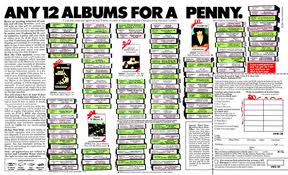Lester Wunderman.
Wait, who? You mean not Tim Berners-Lee? Not William Gibson? Not DARPA?
If the name Lester Wunderman seems unfamiliar to you, you probably know his best-known creation if you ever owned a record player:
Grand Funk Railroad. Cool.
Yes, one of the founding fathers of direct marketing also invented interactivity way back in the mid-1960s.
OK, Wunderman really invented what direct marketers call an "involvement device." Simply put, asking consumers to take an additional, essentially meaningless step, actually increased the response to the ads for Columbia House. That is, an ad that asked consumers to tape a penny to the reply form actually got more new subscribers than a similar ad without the penny request.
I could go on to discuss why this phenomenon works (sometimes, at any rate). However, I think we should discuss instead whether the involvement device has an analog in the digital world.
User experience practices vary from designer to designer. However, they rather agree on one topic: the user should accomplish his or her goals with as few mouse clicks as possible. A snippet from this article recapitulates the party line:
Leave complexity to family dynamics, relationships, and puzzles. The things you create should be easy to use, easy to learn, easy to find, and easy to adapt. Intuition happens outside of conscious reasoning, so by utilizing it you are actually reducing the tax on people's minds. That will make them feel lighter and likely a lot happier.
Kinda flies in the face of taping a penny to a piece of cardstock or asking busy moms to crack an egg for an instant cake mix, doesn't it?
In my experience with such things as preference centers and other web forms, I've always subscribed to the less-is-more approach described above. However, I'd be willing to test a few involvement devices in my next project to see if we can increase conversion by adding fields or steps.
For instance, what if a preference center had fields for questions that really don't add anything to the subscriber experience, such as asking them their favorite food (on a non-culinary site) or favorite genre of music (on a non-music site)? What if we asked them to fill out a free-text field with a sentence or two about why they like or dislike the brand?
I'm willing to be (someone else's money) that there's an involvement device out there that would increase conversion. Anyone have any experience with this idea? Please share below.

No comments:
Post a Comment